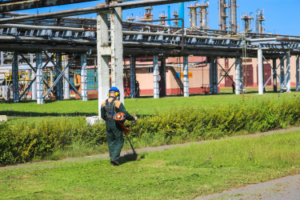If you are maintaining a residential or commercial property, you legally must carry out risk inspections, such as fire risk assessments, to ensure the safety of tenants and reduce the likelihood of accidents. From risk management and risk assessments to property management itself, health and safety is all about identifying risks before they become real issues and safeguarding your tenants.
Risk assessment categories you need to be aware of
Depending on your particular needs, there are different types of risk assessments. These can be divided into two broad categories: qualitative and quantitative.
Quantitative risk assessments are when any information gathered can be shown numerically. They often involve precise data and metrics which help to determine the level of potential risks and track evolution of hazards over time.
Qualitative risk assessments stem from observations and interviews that lead to determining potential risks. Whereas quantitative risks may be expressed as percentages, qualitative methods generally use a scale of low/medium/high to highlight the likelihood of potential risks.
Different types of risk assessments can be qualitative or quantitative, depending on your needs at the time. For instance, a site specific risk assessment ensures that the appliances used in the property, along with any potential climate conditions, are taken into consideration. Some kinds of risk assessments, such as this one, are more suited to commercial properties where machinery is in operation.
How do you undertake a property risk assessment?
There are five main steps to ensuring health and safety in communal areas of flats and other buildings, and the safety of tenants in private areas too.
- Identify the risks – raise awareness of any potential hazards
- Determine who is at risk – you must know who is living in all areas of your property and if any residents have particular requirements
- Evaluate and control potential risks – evaluate the likelihood and potential scale of each risk and begin controlling them, starting with the one that requires most effort
- Record findings and plan for fire risk – record any hazards and how they were dealt with, and ensure all tenants are equipped to deal with potential risks in the future
- Review the risk assessments – assessments should be regularly reviewed to identify any new risks and what might need to be adapted
Fire risk responsibilities for landlords
If you manage residential accommodation such as a block of flats, you have several legal obligations related to fire safety:
- Keep all electrical and gas appliances in good working order
- Ensure there is at least one smoke alarm per floor of the building
- Make sure a carbon monoxide alarm is present in the living space of the building
- Ensure furnishings are resistant to fire
- Produce safety certificates showing last checked dates for appliances
- Annual gas safety appliance check by a gas safe registered worker
- Carry out a fire risk assessment
Fire risk assessments for flats
Fire risk assessments are designed to analyse your property, and the residents of it, to anticipate and prevent any potential fire risk. If you manage multiple properties then an assessment needs to be carried out for each one. Regardless of who you choose to perform the fire risk assessment, you will ultimately be responsible for making sure it is correctly assessed.
Ensuring health and safety in communal areas of flats
Here are four primary ways to ensure safety in the event of a fire or other emergency where tenants may need to evacuate the property:
- Fire exit signage – most critical when a change in direction is needed to vacate a property in emergency
- Keep communal areas clear – access routes should be kept clear of any items that could block an escape in a fire
- Fire door checks – if fire doors are present in your property, they should be periodically maintained to ensure they are operating correctly to prevent the spread of fire and smoke in the event of an emergency.
- Fire detection systems – these generally refer to fire alarms, smoke detectors, and any systems for smoke ventilation, which all need to be maintained regularly.
Risk management and risk assessment help with Dependable
Get in touch to learn more about how Dependable can help you develop a successful risk management and risk assessment process for your residential property, and keep both your property and your tenants safe.




